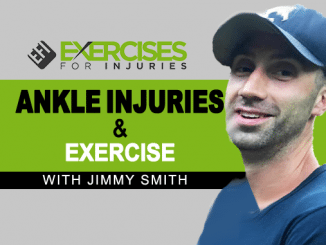
I’d like to mention that the Exercise Rehabilitation of the Lower Body Courses are this weekend before I get to this excellent paper.
Saturday, May 30, 2009 – 8:45 am to 1:00 pm
- Register Now to Exercise Rehabilitation of the Knee
- Douglas College (Royal Ave & 8th St ) – New Westminster, BC
Saturday, May 30, 2009 – 1:15 pm to 5:30 pm
- Register Now to Exercise Rehabilitation of the Hip
- Douglas College (Royal Ave & 8th St ) – New Westminster, BC
Sunday, May 31, 2009 – 8:45 am to 1:00 pm
- Register Now to Exercise Rehabilitation of the Ankle
- Douglas College (Royal Ave & 8th St ) – New Westminster, BC
Sunday, May 31, 2009 – 1:15 pm to 5:30 pm
- Register Now to Balance Training for the Rehab Client
- Douglas College (Royal Ave & 8th St ) – New Westminster, BC
Ankle Exercise Rehab Early registration ends today! (Tuesday, May 26, 2009)
If you’ve ever dealt with an ankle sprain, you know how painful and debilitating it can be. From the first moment that you try to get up from the ground to make your way back to normal activities, there is a long road of challenges ahead. And who doesn’t want as much help as possible when dealing with something excruciating?
An ankle exercise rehab program will help bring some relief and progress towards recovery. That being said, not all programs are created equal. Some components have proven to be more beneficial than others. In this article, we’ll go over what works best in an ankle rehab program and why.

In the American Journal of Sports Medicine, I read an article entitled “Peroneal Activation Deficits in Persons with Functional Ankle Instability.”
The article said an ankle sprain causes 40% of FAI (Functional ankle instability). FAI is a fancy way of saying “recurrent ankle sprains.” Recurrence rates of up to 80% indicate a high likelihood of another ankle sprain after the first one.
The authors commented that the reasons for constant ankle sprains had been thought to be:
- proprioceptive deficits
- residual joint laxity
- impaired balance
- muscular insufficiency
The authors’ focus in this paper was on muscular insufficiency.
Due to the critical role of the peroneal muscle in rearfoot supination or ankle protection from sudden inversion, the authors focused on the peroneal power. After an ankle sprain, injured mechanoreceptors may lead to reflex inhibition of the peroneal muscles. The authors feel that traditional ankle sprain rehabilitation exercises are not addressing the inhibition of the peroneal muscles.

Take home message:
- Recurrent ankle sprains occur in 40% of cases.
- People with frequent ankle sprains have an inhibited (10% decrease) peroneal muscle, which decreases the stability of the ankle.
- The traditional range of motion and strength exercises do not address peroneal inhibition.
- Exercise principles of cardiovascular, strengthening, and stretching won’t help a sloppy ankle.
What should I do about it? What exercises do I provide? Is what you are asking?
See you there! I just finished writing another article about an ankle exercise program that addresses the abovementioned issues. I will explain the program to patients attending this weekend’s Exercise Rehabilitation of the Ankle & Foot program.
– Rick Kaselj


